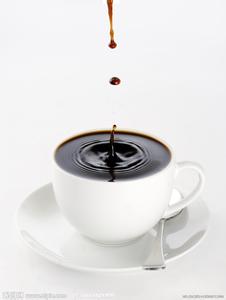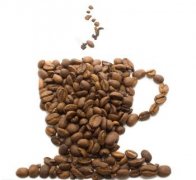The methods and steps of making different Coffee skills of making fancy Coffee

An Italian coffee is usually brewed at home with an Italian mocha pot, which, like a siphon coffee pot, uses the principle of steam pressure to quench the coffee. But the mocha pot uses the steam of pressure to pass directly through the coffee powder, allowing the steam to instantly pass through the cell wall of the coffee powder to quench the inner essence of the coffee, coupled with the use of deep-fried coffee beans to brew, so the brewed coffee has a strong aroma and strong bitter taste, and a thin layer of coffee oil appears on the surface of the coffee, which is the source of the attractive aroma of Italian coffee. Because it is highly concentrated coffee, it is generally tasted with a small coffee cup.
Latte coffee is actually a variety of Italian coffee. First pour the Italian coffee into the cup, about 1 cup of coffee, then pour the hot milk in 3 cup 4 cups, and then pour the foam into the full. Latte caffeine has more fresh milk, so you generally use mugs more often. The proportion of coffee and milk foam in the latte is 1:8:1.
Sankangbao Blue / Macchiato can easily make a cup of Campbell Blue by adding the right amount of whipped cream to the espresso. The fresh white cream floats gently on the deep coffee, just like a white lotus flower that comes out of the mud and is unstained. Macchiato in Italian espresso without whipped cream and milk, only two tablespoons of fine milk foam, to make a delicious cup of macchiato.
Four French milk coffee in French milk coffee, the ratio of coffee to milk is 1:1, so the orthodox French milk coffee brewing, should take both hands milk pot and coffee pot, at the same time from both sides into the coffee cup, so you need to have a certain wrist. Deep-fried and strong coffee can be used here.
Turkish coffee is a kind of coffee that uses the original method of brewing. In a copper pot called Ibrak, beet sugar for brewing coffee is added, not too much. Use stir-fried and medium or finely ground coffee powder, about 12 grams, into the Yibu pot, and then inject water, each Yibu's water capacity is about 130cc. Slowly boil Yibu directly over medium and low heat, remove the fire when the water boils, and then put it on the fire after cooling slightly, so for three times in a row, wait for the coffee to clear, the coffee grounds sink to the bottom of the pot, and then slowly pour the coffee into the cup.
Six Irish coffee brewed whisky from barley, starting with the Celts in Ireland and Scotland. The Irish know best that whisky has a unique and strong incense and a touch of sweetness. Irish coffee made from whisky can better set off the sweet and sour taste of coffee. Heat 1x2oz whisky in a special Irish coffee stove. Turn the cup to heat it evenly. After the alcohol is evaporated, pour in hot coffee and whiskey, add sugar, and finally add whipped cream. You can also add some chocolate powder or willow peel to the whipped cream.
Seven mocha coffee, named after the earliest export port of coffee, is made by adding chocolate to the latte. Add 1 pound 2 ounces of chocolate sauce to the mug, add or subtract according to your preference, and pour Italian coffee into the mug. The amount of coffee is about 30cc. Stir the coffee and chocolate sauce well so that the chocolate sauce is fully integrated into the coffee, then pour in the foamed hot milk until 8 minutes full, then add two tablespoons of fine milk foam in the form of a spiral, add fresh cream from outside to in. and let the fresh cream slightly higher than the mouth of the cup, and finally use chocolate sauce on the fresh cream to create a sharp contrast between black and white visual effect.
The origin of Royal Coffee Royal Coffee is said to have been invented by Napoleon during his expedition to Soviet Russia because of the extremely cold winter, so he added brandy to the coffee to keep warm. After brewing the coffee, put a spoon with a hook in front of the cup, then put a cube sugar in the spoon, pour the brandy along the top of the cube sugar into the spoon, so that the cube sugar fully soaks the brandy. Ignite the brandy above the sugar cube, slowly burn the brandy and let the sugar dissolve slowly with the flame. After the alcohol is completely evaporated, put the spoon into the cup and stir well.
Important Notice :
前街咖啡 FrontStreet Coffee has moved to new addredd:
FrontStreet Coffee Address: 315,Donghua East Road,GuangZhou
Tel:020 38364473
- Prev

Drinking coffee can effectively prevent Alzheimer's disease.
A study published in the United States on the 3rd shows that drinking a cup of coffee a day can effectively prevent Alzheimer's disease. Researchers at the School of Medicine and Health at the University of North Dakota have found that caffeine in coffee can prevent the damaging effects of high cholesterol on brain nerves. The researchers gave experimental rabbits three milligrams of caffeine a day equivalent to one cup of coffee a day for a medium-sized person. In
- Next

How to keep coffee powder fresh? coffee powder can be kept in the refrigerator.
Coffee powder should be stored in a dry, cool place, remember not to refrigerate in the refrigerator, this will cause coffee powder moisture, the following is the ground coffee powder fresh-keeping methods: 1, when the bagged coffee powder opened the package, be sure to fold the opening, and clamp with a clip to avoid coffee powder contact with the air, coffee powder will produce oxidation reaction, affecting the original coffee powder
Related
- Beginners will see the "Coffee pull flower" guide!
- What is the difference between ice blog purified milk and ordinary milk coffee?
- Why is the Philippines the largest producer of crops in Liberia?
- For coffee extraction, should the fine powder be retained?
- How does extracted espresso fill pressed powder? How much strength does it take to press the powder?
- How to make jasmine cold extract coffee? Is the jasmine + latte good?
- Will this little toy really make the coffee taste better? How does Lily Drip affect coffee extraction?
- Will the action of slapping the filter cup also affect coffee extraction?
- What's the difference between powder-to-water ratio and powder-to-liquid ratio?
- What is the Ethiopian local species? What does it have to do with Heirloom native species?

